Irresponsible With Your Money On The Clean Power Alliance

When in doubt, don’t.
—Benjamin Franklin

Thank the Councilmembers Cheryl Heitmann, Christy Weir, Lorrie Brown and Sofia Rubalcava for higher electrical costs, higher water, and wastewater rates. Also thank them for less police protection, fire safety and street paving, all so the City Council can save face and make all residents’ environmental champions.
Every citizen will now pay far more for electricity than if they stayed with Southern California Edison. The City Council had the option to keep your rates the same, but they didn’t. Too bad, because citizens will pay the increase and they will not get a vote.
When Choice Is No Choice At All
The City Council voted to enroll the entire city in the Clean Power Alliance program by a 4-2 vote on February 26th, 2018. During that meeting, our acting City Manager repeatedly advised the Council members they should wait because of financial uncertainties and undetermined costs.
They rejected the City Manager’s advice. Only Mayor Andrews and Councilman Tracy agreed with the City Manager’s recommendation and voted no. The other four members of the Council (Ms. Heitmann, Ms. Weir, Matt LaVere and Erik Nasarenko) committed the entire community to pay the additional costs for 100% for renewable solar energy.
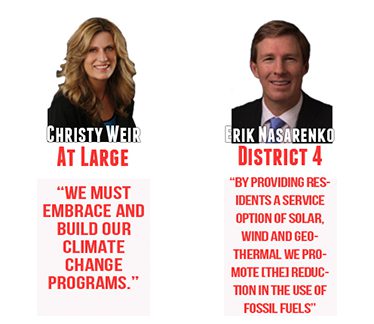
In October 2018, the same four Council members (Ms. Heitmann, Ms. Weir, Mr. LaVere and Mr. Nasarenko) approved a contract with the Clean Power Alliance (CPA), enrolling every citizen and all city accounts in Ventura into the Clean Power CPA, in place of Southern California Edison. However, you were always free to reverse what the City Council decided if you took steps to opt-out. Otherwise, the change took effect in February 2019.
Remember, at the time the City Council voted to approve the Clean Power Alliance they didn’t know what it was going to cost. They committed the entire city to higher energy costs without knowing what those costs were going to be.
Who is the Clean Power Alliance?
 The Clean Power Alliance is a 2-year-old electricity provider in Southern California. They claim to bring clean, renewable energy at competitive rates. They compete with Southern California Edison (SCE), which has been around for 111 years and has been continually working on renewable energy for over ten years.
The Clean Power Alliance is a 2-year-old electricity provider in Southern California. They claim to bring clean, renewable energy at competitive rates. They compete with Southern California Edison (SCE), which has been around for 111 years and has been continually working on renewable energy for over ten years.
The City Council bought into the Clean Power Alliance’s message. You were “automatically enrolled in 100% Green Power which provides 100% renewable energy,” allowing all “residents to be environmental champions, leading the way to a greener future.”
You’re In Unless You Opt-Out
You were in the Clean Power Alliance unless you opted out. To opt-out, you needed to go to cleanpoweralliance.org, or call 888-585-3788. Whichever method you chose required your last utility bill and your SCE account number. Without those, you got nowhere. If you opted-out by telephone, you spent considerable time listening to recordings, ad nauseam, extolling green power’s virtues.
Six Months Later, The City Manager Learns The CPA Power Costs Are Greater Than Expected
In June 2019, the circumstances changed with the Clean Power Alliance. The cost of “green energy” went up—a lot. City Manager, Alex McIntyre, requested that the Council opt-out of the CPA program and return to SCE for the “high user accounts” of the city (like the street lights). Residents would remain enrolled in the 100% increased renewable rate with the CPA.

The Clean Power Alliance Weighs Down Homeowner’s Bugdets
He recommended returning to SCE for at least a year until more was known. He demonstrated that the costs to large energy use accounts within the city, such as street lighting, water, and wastewater, are 20.8% greater than represented a year earlier. The total increase in costs for these high user accounts could be an additional $571,476.
After a lengthy discussion, filled with rampant confusion, misunderstanding, and punctuated with illogical statements, four members of the Council (Mses. Heitmann, Weir, Brown and Rubalcava) rejected the City Manager’s recommendation. These four voted that all of the smaller city accounts would remain in the CPA program at 100% green power. As for the six large City accounts, they voted to opt-out the street lighting account, and reduce the other large accounts to the 36% wind rate.
The result is that City government will be paying $228,086 more for electrical power through the CPA program than they would have paid through SCE. Of that number, water and wastewater account will be paying $157,148. What’s more, they didn’t know the actual costs when they voted.
As for what residents will pay, the City Council confirmed that they would stay in the program at the 100% rate.
That gives all residents “the opportunity to be environmental champions, leading the way to a greener future.”
What Impact Will The Clean Power Alliance Decision Have?
The costs of participating in the Clean Power Alliance are becoming more visible, and it’s hurting the city. Southern California Edison increased its rates to the CPA, who is now passing those costs on to Ventura. The timing of the rate increase pressured the City Council into making a rushed, imprudent fiscal decision.
In the 11th hour, our solar power provider was now going to substitute wind power for solar and presented a $228,086 rate increase to power city departments. All of this came on the same evening that the City Council gave final approval to the 2019-2020 budget. Now this $228,086 increase, at a minimum, will shortchange police, fire and street paving, all so the city can have wind power.
Police, Fire and Street Paving Gets Shorted
 Councilman Jim Friedman got it right when he voted no. When he expressed that, “The budget is $3.5 million in the red now, and this just makes it worse.” By voting to pay more to the CPA—money the city does not have—city services will suffer. Your streets won’t get paved. The city doesn’t hire a police officer. Your water and wastewater rates increase. The police and fire departments don’t respond in time to save a life. If any of these things happen, you only need to look to four members of our City council for their budget decisions. (Mses. Heitmann, Weir, Brown and Rubalcava)
Councilman Jim Friedman got it right when he voted no. When he expressed that, “The budget is $3.5 million in the red now, and this just makes it worse.” By voting to pay more to the CPA—money the city does not have—city services will suffer. Your streets won’t get paved. The city doesn’t hire a police officer. Your water and wastewater rates increase. The police and fire departments don’t respond in time to save a life. If any of these things happen, you only need to look to four members of our City council for their budget decisions. (Mses. Heitmann, Weir, Brown and Rubalcava)
The city staff recommended opting out for one year until Ventura got a clearer understanding of what their fiduciary responsibilities would be. The City Manager recommended the City Council opt-out for one year. Councilmembers Heitmann, Weir, Brown and Rubalcava disregarded the staff’s recommendation to protect past votes to join the Clean Power Alliance. They voted to “save face” over the public’s interest.
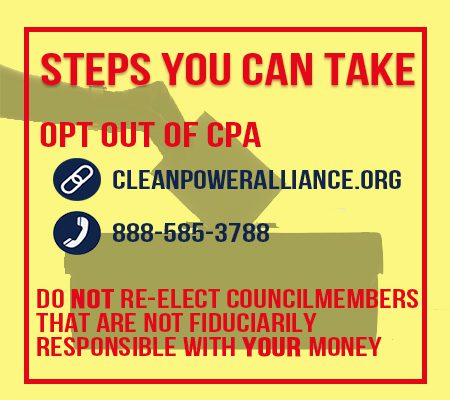
Making Your Decisions for You
 The City Council chose your electricity provider for you. In so doing, they shifted the burden of “Green Power” to every homeowner in the city. So, if you did not opt-out, you’ll pay higher electricity bills. We should resent the City Council forcing this upon the community. The CPA program should be a decision for each citizen to make. In this case, the government effectively enrolled everyone automatically without any consent from the citizens who will be paying the bill.
The City Council chose your electricity provider for you. In so doing, they shifted the burden of “Green Power” to every homeowner in the city. So, if you did not opt-out, you’ll pay higher electricity bills. We should resent the City Council forcing this upon the community. The CPA program should be a decision for each citizen to make. In this case, the government effectively enrolled everyone automatically without any consent from the citizens who will be paying the bill.
Four members of the City Council (Heitmann, Weir, Brown and Rubalcava) were caught up in the “Save the Planet” message and hysteria. They believed that recyclable energy is the better choice, regardless of the cost. The Council should have taken a more cautious approach with an unproven, start-up company offering power whose benefits and costs are unknown. Instead, they let ideology cloud their decision instead of being fiscally prudent with taxpayer money.
Editor’s Comments
Should Ventura be concerned about a City Council that doesn’t plan, and spends money they don’t have? So far, they act with an attitude that ‘we’ll find the money somewhere.’ Obviously not from their pockets.
The highway to Hell is paved with good intentions. The City Council would do well to remember that. The city’s finances can withstand fiscal irresponsibility because of the Council’s financial ignorance only for so long. A day of reckoning is coming. Ventura faces six years of negative budgets. Perhaps that day is sooner than the City Council realizes.
As citizens, we must ask, “How long will we live with the Council’s bad financial decisions? For how long will we accept Councilmembers with political agendas that disregard city staff recommendations to make a ‘statement’?” Should Ventura be concerned about a City Council that doesn’t plan and spends money it doesn’t have?
Carefully examine your expenses and your beliefs to determine if the Clean Power Alliance is for you. If not, opt-out.
Moreover, when you go to the polls next November, do not reelect Councilmembers who exhibit no fiduciary responsibility with your money.
It’s time we examine our City Council’s performance and ask why they do the things they do. If we don’t diligently watch our money now, there may not be any money to watch in the future.
2022 Addendum
The Clean Power Alliance published its annual price comparison to Southern California Edison. The CPA costs more for electricity at every level of clean energy than SCE for a typical Ventura resident. If you’re concerned about saving money, opt out of the CPA using the contact information above.
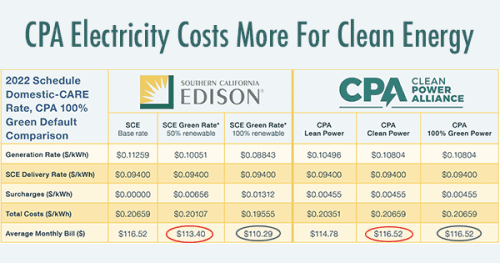
Demand More Fiscal Responsibility On The Clean Power Alliance
Below you’ll find the photos of our current City Council. Click on any Councilmember’s photo and you’ll open your email program ready to write directly to that Councilmember.
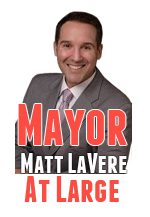 |
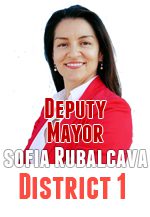 |
|
 |
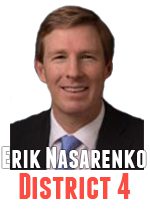 |
|
 |
 |
|
 |
For more information like this, subscribe to our newsletter, Res Publica. Click here to enter your name and email address.




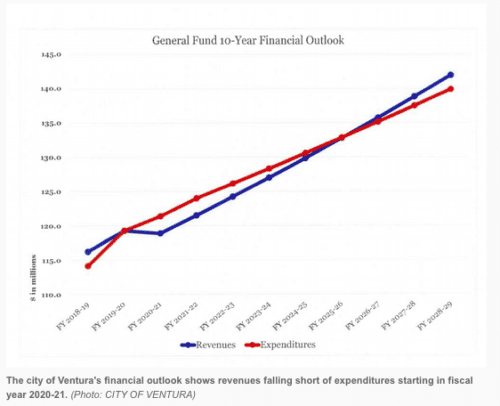
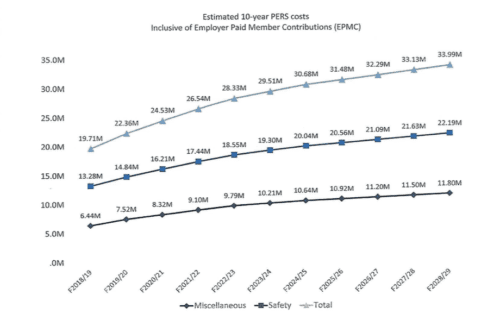
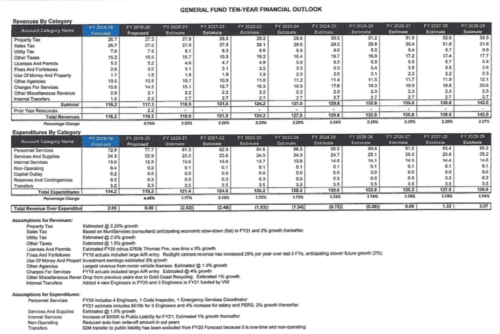
 A second problem is how special interest groups lined up to get their share of Measure O. At the May 20th City Council meeting, Councilmembers Lorrie Brown, Jim Friedman and Mayor Matt LaVere tried to move funds from Measure O to the General Fund for Fire Station No. 4.
A second problem is how special interest groups lined up to get their share of Measure O. At the May 20th City Council meeting, Councilmembers Lorrie Brown, Jim Friedman and Mayor Matt LaVere tried to move funds from Measure O to the General Fund for Fire Station No. 4.  Economic disasters are all around us. There is no reason to think that Ventura is immune to them. The City of Oxnard is preparing to lay off hundreds of employees. They also plan to close a fire station and reduce the number of fire personnel available to respond to emergencies. The Oxnard City Manager says, “We are down to bare bones.” What’s happening in Oxnard is a preview of what could happen in Ventura unless the City Council acts quickly.
Economic disasters are all around us. There is no reason to think that Ventura is immune to them. The City of Oxnard is preparing to lay off hundreds of employees. They also plan to close a fire station and reduce the number of fire personnel available to respond to emergencies. The Oxnard City Manager says, “We are down to bare bones.” What’s happening in Oxnard is a preview of what could happen in Ventura unless the City Council acts quickly.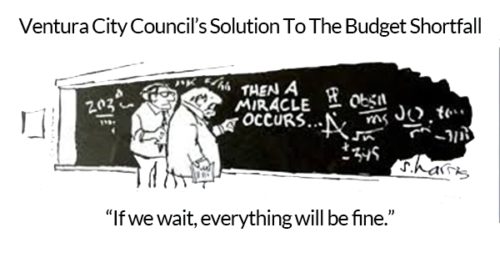 The budgetary crisis is entirely avoidable if the City Council acts now. The solutions are simple, but they are not easy. It requires significant political will and resolve.
The budgetary crisis is entirely avoidable if the City Council acts now. The solutions are simple, but they are not easy. It requires significant political will and resolve.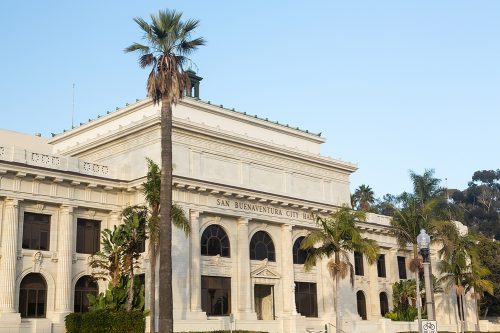
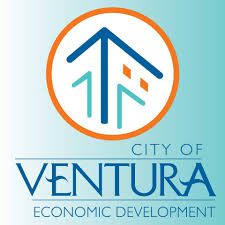 Imagine the stimulus to the community of filling the old Star Free-Press building or the Toys-R-Us location would have.
Imagine the stimulus to the community of filling the old Star Free-Press building or the Toys-R-Us location would have.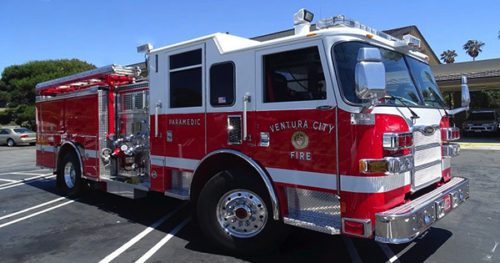 Any change to the Fire Department would likely be unpopular with the public. That makes it a subject considered by Councilmembers, to be too controversial to discuss. The fire department union will become protective of their fellow firefighters and will want to preserve the status quo.
Any change to the Fire Department would likely be unpopular with the public. That makes it a subject considered by Councilmembers, to be too controversial to discuss. The fire department union will become protective of their fellow firefighters and will want to preserve the status quo.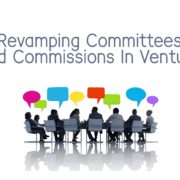


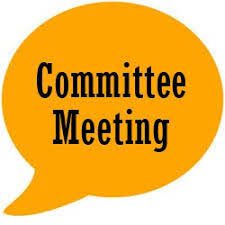 The Council has proposed some significant changes. They include:
The Council has proposed some significant changes. They include: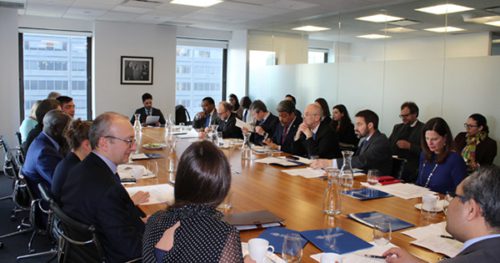 Every Planning Commissioner would be accountable to the Councilmember who appointed him or her.
Every Planning Commissioner would be accountable to the Councilmember who appointed him or her. The proposed changes don’t please everyone. The immediate resistance came from some existing committee members and commissioners. There are two main objections. Some complained about the process. Others believe there will be less transparency and citizen involvement.
The proposed changes don’t please everyone. The immediate resistance came from some existing committee members and commissioners. There are two main objections. Some complained about the process. Others believe there will be less transparency and citizen involvement.


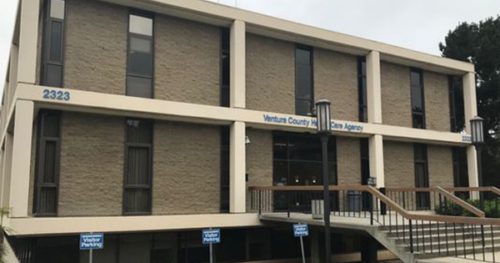 Topping the mayor’s list of priorities was opening a permanent, full-service homeless shelter by December 31, 2019. The date gives this goal specificity. Opening the center doesn’t begin to solve the problem, though. Mayor LaVere and the City Council equate opening a homeless center with improving Ventura’s homeless situation. They are not the same thing.
Topping the mayor’s list of priorities was opening a permanent, full-service homeless shelter by December 31, 2019. The date gives this goal specificity. Opening the center doesn’t begin to solve the problem, though. Mayor LaVere and the City Council equate opening a homeless center with improving Ventura’s homeless situation. They are not the same thing. What’s more, the City Council conflates opening the center with helping the homeless. The goal shouldn’t be to have beds available. That’s an intermediary step. The goal should be to get the homeless off the street and return them to a healthy way of life.
What’s more, the City Council conflates opening the center with helping the homeless. The goal shouldn’t be to have beds available. That’s an intermediary step. The goal should be to get the homeless off the street and return them to a healthy way of life.
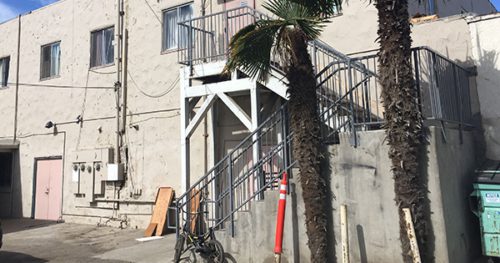 Mayor LaVere’s fourth goal is to beautify the community. He wants to end what he termed “blight.”
Mayor LaVere’s fourth goal is to beautify the community. He wants to end what he termed “blight.”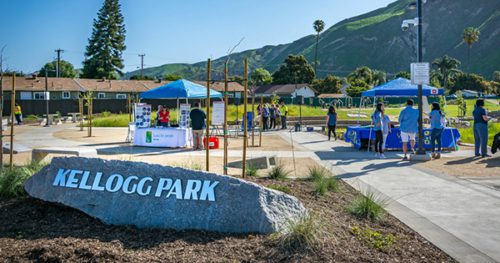 The mayor hopes to achieve this goal by building community parks. The Westside Community Park set the model. Mayor LaVere’s first target is Mission Park.
The mayor hopes to achieve this goal by building community parks. The Westside Community Park set the model. Mayor LaVere’s first target is Mission Park. Mission Park is home to a growing number of Ventura’s homeless population. To prepare the area, the homeless must move elsewhere. The 55-bed homeless shelter isn’t the solution. Also, even if we scatter the homeless, there are safety issues. Someone would have to clean the discarded needles, drug paraphernalia and human waste from the park.
Mission Park is home to a growing number of Ventura’s homeless population. To prepare the area, the homeless must move elsewhere. The 55-bed homeless shelter isn’t the solution. Also, even if we scatter the homeless, there are safety issues. Someone would have to clean the discarded needles, drug paraphernalia and human waste from the park.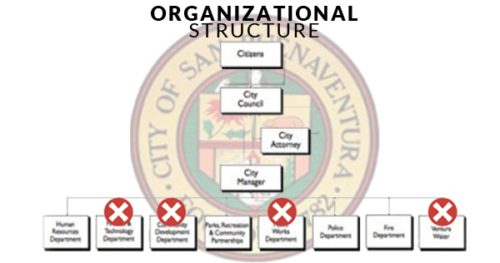 The need for key personnel is a huge problem. To fulfill any of our mayor’s goals requires adequate staff. The final 2019-2020 goal is to stabilize and strengthen our city government. The city has eight unfilled, critical managerial positions and dozens of vacant jobs. The city will achieve none of the other ambitious goals if there aren’t enough workers at City Hall.
The need for key personnel is a huge problem. To fulfill any of our mayor’s goals requires adequate staff. The final 2019-2020 goal is to stabilize and strengthen our city government. The city has eight unfilled, critical managerial positions and dozens of vacant jobs. The city will achieve none of the other ambitious goals if there aren’t enough workers at City Hall.
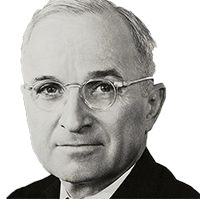


 Costing over $500,000,000 is not the only issue. The more significant issue is that the City Council assumed DPR water was safe to drink.
Costing over $500,000,000 is not the only issue. The more significant issue is that the City Council assumed DPR water was safe to drink.  However, the Consent Decree says the court can extend the time limit in the event of construction constraints, financing problems, or an emergency. It requires Ventura to petition the court requesting an extension, or an agreement with the plaintiff and their lawyers. That has not happened.
However, the Consent Decree says the court can extend the time limit in the event of construction constraints, financing problems, or an emergency. It requires Ventura to petition the court requesting an extension, or an agreement with the plaintiff and their lawyers. That has not happened. On February 4, 2019, Council Member Jim Friedman asked our City Attorney, Gregory Diaz about extending the deadline.
On February 4, 2019, Council Member Jim Friedman asked our City Attorney, Gregory Diaz about extending the deadline.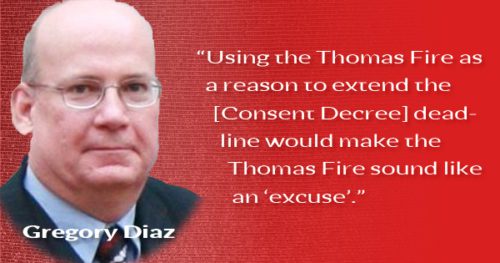




 Ventura Water forces the City Council to get their information from the General Manager. Thus bypassing the entire reason the city established the Water Commission.
Ventura Water forces the City Council to get their information from the General Manager. Thus bypassing the entire reason the city established the Water Commission. You may not have heard about the incident. It’s not because Ventura Water didn’t announce it. They did. Ventura Water fulfilled the letter of the law, but it may have missed the intent behind it. Meeting the legal requirement seems to be the minimum standard. Yet setting the bar at the lowest level may place everyone’s health at risk in the future.
You may not have heard about the incident. It’s not because Ventura Water didn’t announce it. They did. Ventura Water fulfilled the letter of the law, but it may have missed the intent behind it. Meeting the legal requirement seems to be the minimum standard. Yet setting the bar at the lowest level may place everyone’s health at risk in the future. In July, Ventura Water withheld information from the Water Commission. A panel of experts examined
In July, Ventura Water withheld information from the Water Commission. A panel of experts examined 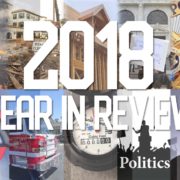


 The City Council waffles on second-story height restrictions for
The City Council waffles on second-story height restrictions for 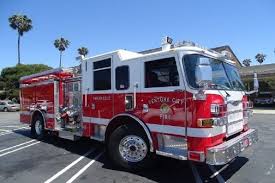 The City Council instructs Ventura Water to focus on connecting to State Water
The City Council instructs Ventura Water to focus on connecting to State Water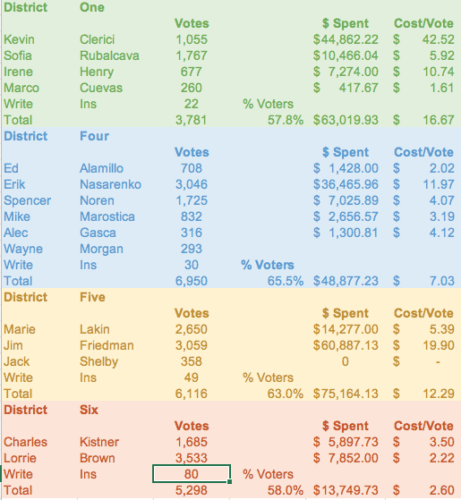
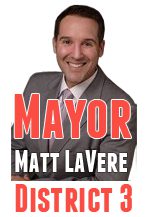



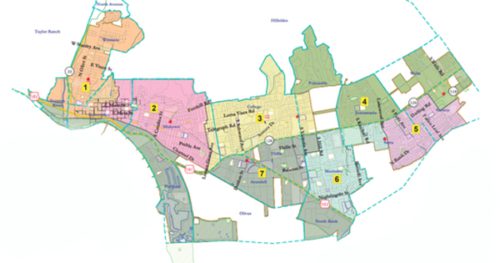

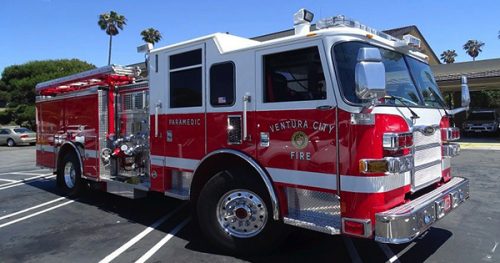
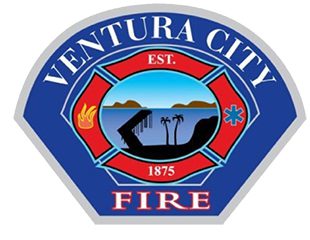


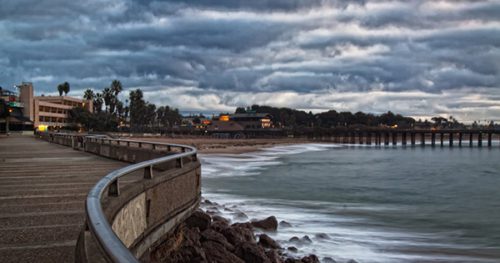

 to the security camera monitoring. The changes include:
to the security camera monitoring. The changes include: